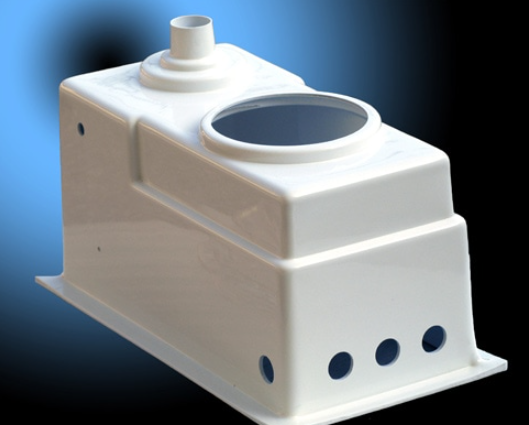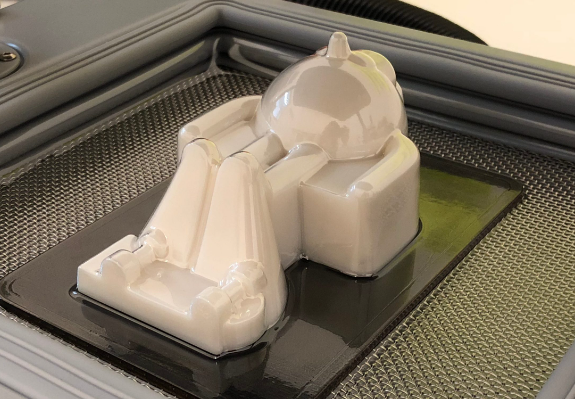Vacuum forming costs depend on factors like material type, design complexity, mold size, production quantity, and the level of customization required.

Factors Influencing the Cost of Vacuum Forming
Vacuum forming, a popular method in thermoforming, involves heating a plastic sheet until it’s pliable and then using a vacuum to shape it over a mold. Various factors significantly impact its cost-effectiveness and efficiency.
Material Costs
- Plastic Type: Different plastics, like PVC, PETG, or ABS, vary in price. High-performance plastics cost more.
- Sheet Thickness: Thicker sheets are more expensive due to greater material usage.
- Surface Finishes: Textured or colored sheets can add to the cost.
Equipment and Technology
- Machinery Quality: Higher-quality machines with better efficiency and longevity cost more initially but save money in the long run.
- Automation Level: Automated vacuum forming machines speed up production but require a higher upfront investment.
- Maintenance Costs: Regular maintenance and occasional repairs add to overall equipment costs.
Labor and Time Efficiency
- Skill Level of Workers: Skilled labor costs more, but it can enhance product quality and production speed.
- Production Time: Faster production times reduce labor costs but may require more advanced, costly machinery.
- Training and Development: Investing in employee training improves efficiency but adds to the labor cost.
Scale of Production
- Batch Size: Larger production runs generally reduce the per-unit cost due to economies of scale.
- Customization Level: Custom or intricate designs require more time and resources, increasing costs.
- Reusability of Molds: Durable molds that can be reused for multiple batches reduce long-term costs.
Cost Analysis of Vacuum Forming
Analyzing the costs of vacuum forming provides insights into its economic viability, especially when comparing it to alternative methods like injection molding or 3D printing. It’s crucial to understand the variables that influence the total cost.
Comparative Cost Analysis with Other Forming Methods
- Injection Molding: This method generally has higher tooling costs than vacuum forming, making it less cost-effective for small runs. However, for large-scale production, injection molding can be more economical due to lower per-unit costs.
- 3D Printing: While offering high customization and low initial costs, 3D printing can be more expensive for mass production due to slower production speeds and higher material costs.
- Blow Molding: Primarily used for hollow objects, blow molding can be less expensive for specific products but lacks the versatility and range of design options available in vacuum forming.
- Material Usage: Vacuum forming typically uses less material than other methods, leading to lower material costs. The efficiency of material use in vacuum forming is a significant cost advantage.
Case Studies: Real-World Examples
- Small Business Application: A small business specializing in custom packaging solutions utilized vacuum forming for short runs. The initial setup cost was approximately $5,000, with material costs averaging $0.50 per unit for a batch of 1,000 units. The total cost, including labor and overhead, was around $7,000, translating to $7 per unit.
- Large Scale Industrial Use: An automotive parts manufacturer used vacuum forming for dashboard components. The project had a setup cost of $20,000, with material costs of $2 per unit for 10,000 units. The total project cost was $40,000, equating to $4 per unit. Compared to injection molding, which offered a per-unit cost of $3.50 but required a $50,000 setup cost, vacuum forming was more cost-effective for this medium-scale production.
Reducing Costs in Vacuum Forming
Cost reduction in vacuum forming is essential for enhancing profitability and competitiveness. By adopting innovative techniques and embracing automation, manufacturers can significantly reduce expenses without compromising on quality.
Innovative Techniques and Materials
- Recycled Materials: Using recycled plastics can reduce material costs. For instance, PETG recycled sheets may cost 20-30% less than their virgin counterparts.
- Optimized Design: Simplifying designs to reduce material waste and decrease cycle times can lead to substantial savings. For example, redesigning a product to use 10% less material can directly reduce the cost per unit.
- Energy-Efficient Machinery: Investing in machines that consume less power can lower operational costs. For example, a machine that uses 15% less energy can save thousands of dollars annually in electricity costs.
Automation and Its Impact on Costs
- Labor Cost Reduction: Automation reduces the need for manual labor, which can be a significant expense. Automated trimming processes, for instance, can reduce labor costs by up to 50%.
- Increased Production Speed: Automation can significantly speed up production. A fully automated vacuum forming machine can produce twice as many units in the same time as a manual one, effectively halving the production time and cost per unit.
- Consistency and Quality Control: Automated systems ensure consistent quality, reducing waste and the cost associated with reworks. For example, a consistent thickness in vacuum-formed parts can reduce material wastage by up to 5%.

Choosing the Right Vacuum Forming Service
Selecting the appropriate vacuum forming service is a critical decision that can significantly impact the quality, cost, and success of your project. Understanding the key criteria for selection and navigating the cost versus quality trade-offs is essential.
Criteria for Selection
- Experience and Expertise: Look for a service provider with a strong track record in vacuum forming. Years of experience often translate to better problem-solving skills and higher quality outcomes.
- Quality of Equipment: Assess the quality and maintenance of their equipment. Modern, well-maintained machinery ensures efficiency and quality.
- Material Selection: Ensure the provider has access to a wide range of materials and can offer advice on the best options for your specific needs.
- Production Capacity: Consider their ability to meet your quantity requirements. A provider with larger production capacity can handle bulk orders more efficiently.
- Lead Times: Evaluate their average lead times. A service that can provide quick turnaround times is crucial for time-sensitive projects.
- Customer Service and Communication: Good communication and customer service indicate a provider who values client satisfaction and is likely to be responsive to your needs.
Cost Versus Quality Trade-offs
- Initial Quotation: Lower quotes might be appealing but can sometimes lead to compromises in material quality or precision. Balance the cost with the quality you need.
- Long-term Cost Savings: Investing more in higher quality services can lead to better durability and fewer defects, reducing long-term costs.
- Customization Needs: More intricate and customized designs often cost more but can provide better functionality and aesthetics. Weigh the benefits of customization against the additional costs.
- Reputation and Reliability: Sometimes, paying a premium for a service provider with an excellent reputation can be worthwhile for the assurance of reliability and quality.


